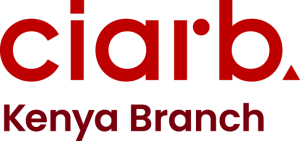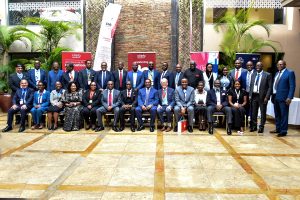Problem Statement
Litigation is the traditional method used by many an athlete in their pursuit of justice. However, Sports arbitration is fast emerging as a popular Alternative Dispute Resolution (ADR) apparatus used to resolve differences in the realm of sports. Athletes often chose arbitration because, when compared to litigation, it is quicker and less expensive. However, athletes are up against several challenges when using this form of ADR to resolve their disputes. These challenges include illiteracy, little if any command of the English language, lack of legal jurisprudence and unequal bargaining power. This begs the question, how can one get sports arbitration to better serve athletes so that they achieve justice when using this method of ADR?
The Ideal
Ideally, athletes should have access to a fair, impartial and efficient ADR process. Athletes should be able to select arbitrators who are not conflicted and at the same time who are also knowledgeable in matters sports law. They should also have access to legal counsel to ensure that their interests and rights are protected during the entire process. Furthermore, the ADR process should be trustworthy and the arbitrator’s rulings should be based on the merits of the case and not on any irrelevant, inadmissible, non-weighty or immaterial factors.
Challenges Athletes Face
Athletes face several challenges when using this form of ADR to resolve their disputes. Firstly, many athletes are illiterate or semi – literate making it near impossible for them to understand voluminous legal documents and detailed ADR procedures. Secondly, many athletes come from traditionally non-English speaking continents and this leaves them grappling to understand the language used in the proceedings. Thirdly, many athletes lack an in-depth understanding of sports law, which puts them at a disadvantage during these ADR proceedings. Finally, athletes on many occasions have little if any bargaining power, particularly when pitted against powerful sports bodies or affluent adversaries.
Interventions
Several interventions may be employed when addressing the challenges faced by athletes when using arbitration to resolve their disputes. These interventions may be classified as follows:
- Political interventions: The various jurisdictions involved can enact laws or regulations that protect the rights of athletes and ensure that they have access to fair and impartial arbitration processes[1]. These jurisdictions can also provide funding for legal programs to aid athletes who cannot afford legal representation.
- Economic interventions: Sports organisations can provide funding for legal aid programs or pro bono legal services[2] to assist athletes. These organisations can also provide incentives for arbitrators to be disinterested and truthful in their decision-making.
- Sociological interventions: Education and awareness programs can be developed to inform athletes about their rights as well educate them on the arbitration process as a form of ADR. These programs can be directed at athletes from non-English speaking countries and those with limited literacy skills. In addition, strong support networks can be established to provide emotional and psychological support to athletes before, during and after the arbitration process.
- Technological interventions: Technology[3] can be used to improve athletes’ accessibility to arbitration proceedings. For instance, remote video conferencing technology can be used to allow athletes to participate in arbitration proceedings from distant locations.
- Ecological interventions: Environmental factors that affect the athlete’s ability participate in arbitration proceedings can be addressed. One way of addressing this is to compel architects to thoughtfully design facilities by making them accessible for athletes with disabilities[4].
- Legal interventions: Sports bodies can enact arbitration rules that ensure truthfulness and honesty in the arbitration process. For example, sports institutions can require arbitrators to declare if they are conflicted in any way[5] and that arbitrators publish Reasoned Awards.
[1] Rule 61 (2) of the Olympic Charter of 17th July 2020
[2] Sports Resolutions pro bono services
[3] ICC Netcase
[4] The functions of toilets and parking spaces should especially be considered
[5] IBA Guidelines on conflict of interest of 23rd October 2014
Interventions, an Analysis
A SWOT (Strengths, Weaknesses, Opportunities and Threats) analysis of each intervention is quite revealing. Political interventions such as jurisdictional regulations can provide legal frameworks that protect the individual rights of athletes. However, such controls may also be perceived as infringing upon the autonomy of sports institutions and may face opposition from these bodies[1]. Economic interventions such as financial assistance for legal aid programs[2] can benefit athletes for whom legal representation would otherwise prove too costly. However, these programs may have limited funding and may be unavailable in some jurisdictions. Sociological interventions such as education programs and support structures can improve the awareness[3] and psychological well-being[4] of athletes. This increased awareness will require an early intervention framework to respond to athletes’ needs. It will also require a comprehensive mental health framework to needy athletes. Technological interventions will more often than not require a significant amount of capital to set up. These expenses will include support staff to run the technology and who will then eventually train the locals on how to use it and harness it to their benefit. Ecological interventions will require a generally wider awareness among the non-sporting community. This may be in the form of architects designing buildings that are increasingly ergonomically friendly to disabled athletes such as providing ramps alongside staircases for athletes using wheelchairs and crutches or handrails for those who are visually impaired. Legal interventions will require the goodwill of legal practitioners and have them avoid exploiting potential loopholes in the legal framework set up to help the athletes in their quest for justice via ADR. Such exploitation will be against the ethos of pushing for Sports Arbitration to better serve athletes.
[1] Rule 61 (1) of the Olympic Charter of 17th July 2020
[2] Athlete Legal Aid Program, Arbitration Fund for African Students (AFAS) strategy for 2021 – 2026
[3] International Olympic Committee Consensus Statement 2019
[4] The introduction of Emma Murray, a mindfullness coach, to Richmond Football club in Australia, significantly improved the team’s performance
Recommendation
The larger sports organisations like the International Olympics Committee (IOC), Federation of International Football Association (FIFA), World Boxing Organisation (WBO) etc should push for the previously mentioned interventions to be enacted within them. This would be a huge step in the right direction owing to the sheer number of athletes registered with these sports bodies.
Conclusion
Sports Arbitration can be successfully employed by athletes as a form of ADR as they pursue justice. There are various challenges that the athletes are up against, however these can be adequately addressed in order to bring Arbitration as a means of ADR closer to a needy sports man or woman.
Qs. Gyavira Namulanda
Quantity Surveyor and Arbitrator, FCIArb





